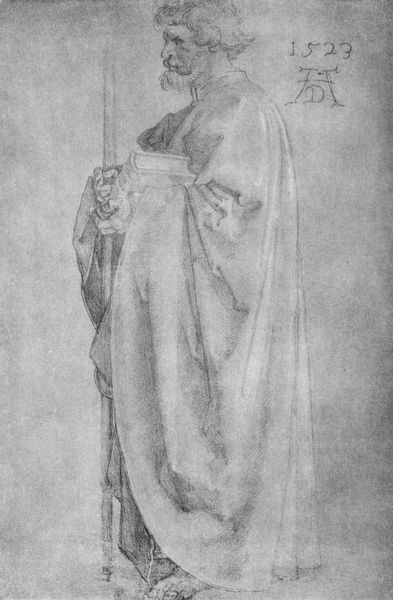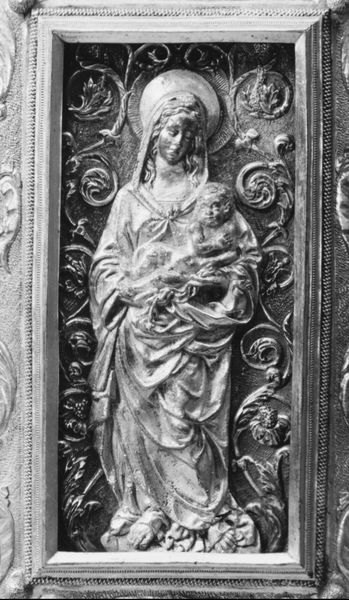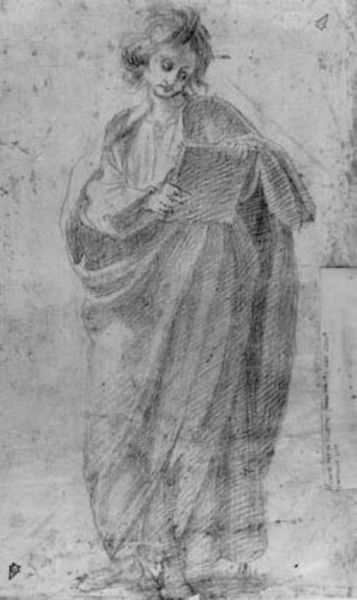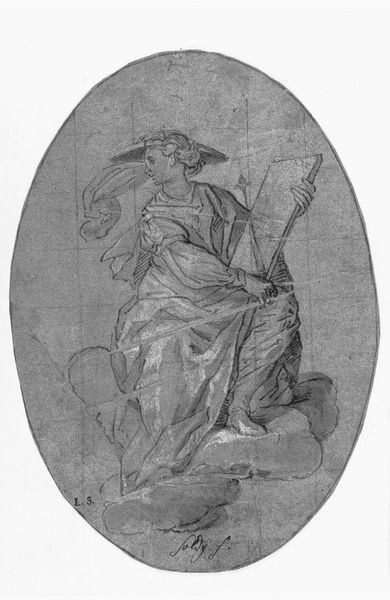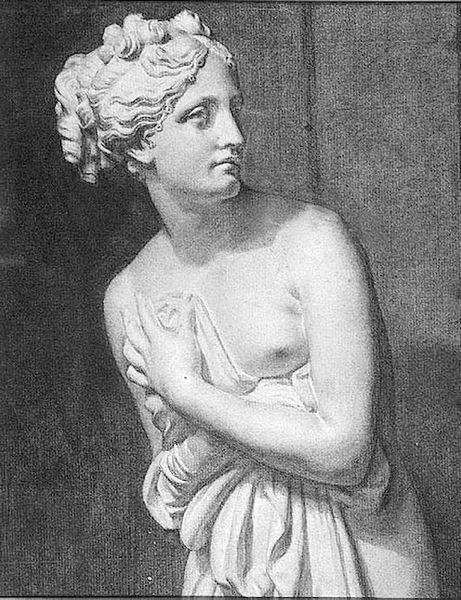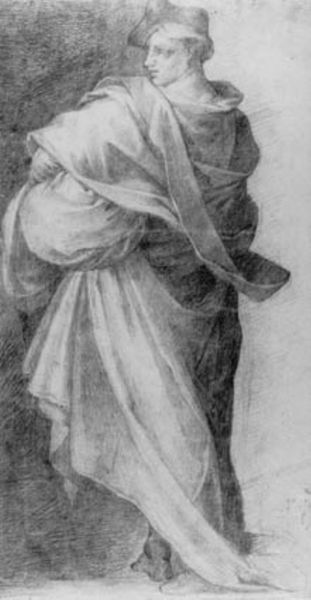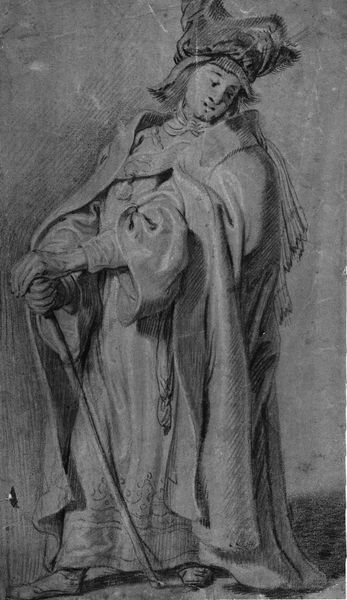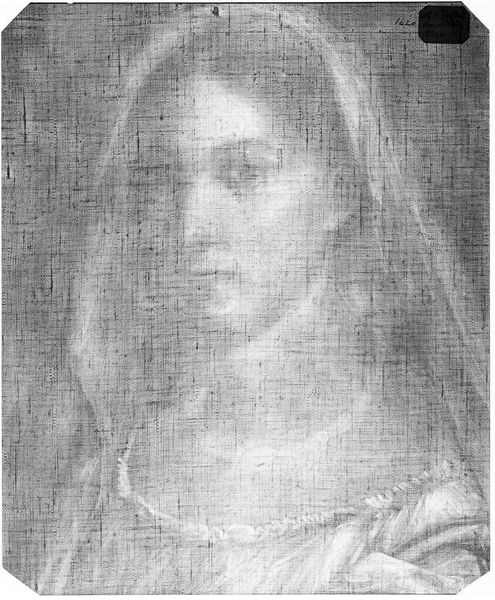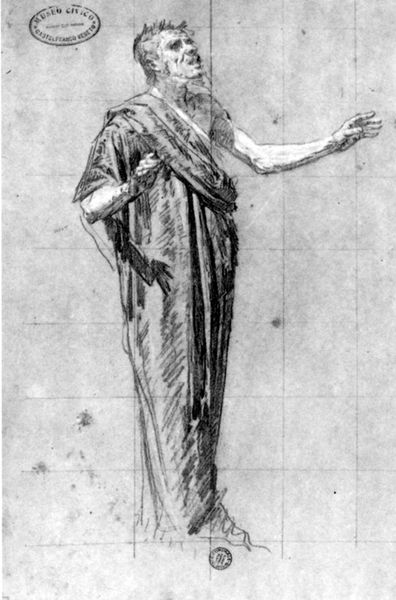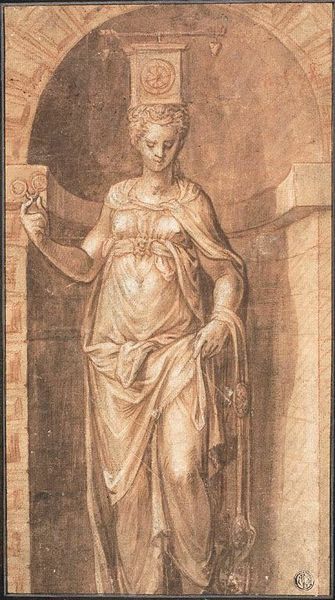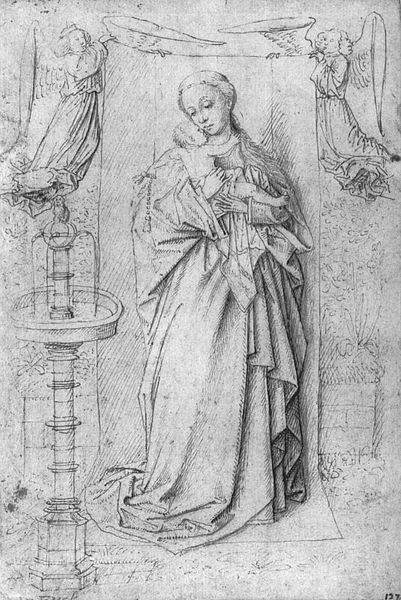
fresco
#
portrait
#
figuration
#
fresco
#
black and white
#
history-painting
#
academic-art
#
italian-renaissance
Dimensions: 87.5 cm (height) x 55.5 cm (width) (Netto)
Curator: This is a 16th-century fresco depicting Saint Catherine of Alexandria, attributed to an anonymous artist. It's part of the SMK collection. Editor: Immediately, I'm struck by its haunting quality, even through what looks like significant age. She has this gentle but resolute gaze. There's an otherworldly stillness. Curator: Yes, the fresco technique, painting on fresh plaster, often lends itself to a certain ethereal quality. Think of the power structures that elevated certain figures. Here we see the classic representation of Saint Catherine; can you detect her typical attributes? Editor: Right, the crown suggests her royal lineage, and what looks like a palm frond maybe, referring to her martyrdom, it cuts quite prominently through the picture, it feels so weighty, does it also hide some compositional issues? Curator: Well, these attributes become symbolic, especially within religious art and iconography, reminding viewers of her story, that being of an intellectual woman who converted to Christianity and faced persecution, it certainly reflects a pivotal tension between faith, power and gender during the Renaissance period. But what is your perception on her apparent melancholy, perhaps reflecting the period, do you see something in it too? Editor: Absolutely. I can't help but see the echoes of countless silenced voices through the ages. Her very stillness feels like a powerful resistance, she stares back unflinchingly despite everything; and it comes back to that palm frond which divides, cuts, defines that composition; for sure it has weight for its own symbolic purposes. Curator: Exactly. Examining works like this within their socio-political context reveals a deeper narrative about agency, martyrdom and resilience. Her very presence invites dialogue about past oppressions, informing our present understanding of justice. Editor: Thinking about this, I initially saw only sadness, but actually there is strength there as you point out. It's that quiet defiance I'll carry with me. Curator: I am grateful that you could meet her not just in aesthetic terms but as an idea worth discussing and confronting for our contemporary conversations, helping us redefine those classic canonised notions and find empowerment from their stories.
Comments
No comments
Be the first to comment and join the conversation on the ultimate creative platform.
